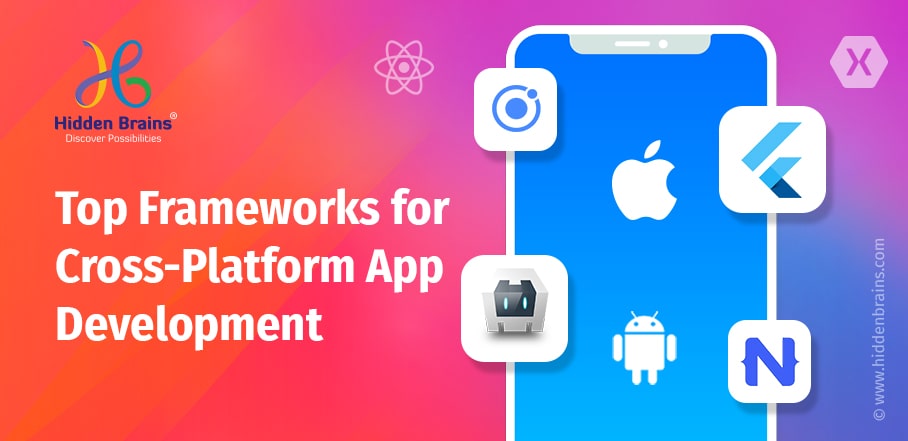Table of Contents
Cross-platform app development is the need of the hour. It is about reaching out to maximum users worldwide across different operating systems such as Android and iOS. Cross-platform app development frameworks are the steps in the right direction allowing developers to write code once that runs across other platforms without compromising user experience and quality.
The scope of cross-platform app development is increasing at an exponential pace. However, there are several challenges involved in cross-platform app development, such as inconsistent communication between the native and non-native devices, poor performance, and security concerns.
There are several cross-platform frameworks available to tackle the challenges associated with cross-platform mobile app development. These frameworks eliminate the need for separate coding for each platform and ensure efficient functioning on all platforms.
If you are planning to build a cross-platform application, here are the frameworks to watch out.
XAMARIN
Launched in 2011 and acquired by Microsoft in 2016, Xamarin is a cross-app development framework. Xamarin is a feasible solution to resolve problems associated with conflicting native technology stacks, making mobile app development an expensive and challenging task.
As part of the .NET ecosystem used by millions of developers worldwide, Xamarin allows sharing more than 75% of code across platforms, for “write once, run anywhere”.
React Native
Launched in 2015 by Facebook, React Native created a buzz in the market as a hybrid framework, and in a brief duration, React Native is already one of the most popular ones.
- React Native allows building native apps without compromising user experience with platform-agnostic native components like View, Text, and Image to map the platform’s native UI building blocks directly.
- Iterate at lightning speed. No more waiting for native builds to finish.
Ionic
Ionic is one of the most popular open-source mobile UI toolkits to build cross-platform native and web app experiences. It is all about moving quickly with a single code base, running everywhere with JavaScript and the Web. It is important to partner with an Ionic mobile app development company to explore several features.
- Library of mobile-optimized UI components, gestures, and tools, Ionic offers an option to build fast, highly interactive apps.
- Perform on all the latest mobile devices with a small footprint, and best practices such as hardware accelerated transitions, touch-optimized gestures, pre-rendering, and AOT compiling.
- Hybrid apps with native type feature for Android and iOS as well as progressive web apps.
Flutter
Flutter is most talked about Google’s UI toolkit to build beautiful, natively compiled applications for mobile, web, and desktop from a single codebase.
- Complete set of fully-customizable widgets to build native interfaces.
- Flutter code is compiled to native ARM machine code.
- Hot reload to quickly and easily experiment, build UIs, add features, and fix bugs faster.
Adobe PhoneGap
This framework is an open-source distribution of Cordova — extending the benefits of technology built by a diverse team of pros with a robust developer community and access to the PhoneGap toolset to ensure rapid development of the mobile application.
- Create, serve, compile, and run apps efficiently with your command-line terminal.
- Transfer web development skills to build mobile apps
Conclusion
Cross-platform app development solutions are important to reach out to audiences across two large platforms— Android & iOS. The critical question is, which framework mentioned should you choose? The answer is everything depends on expert mobile app developers and a reliable cross-platform mobile app development company.










































